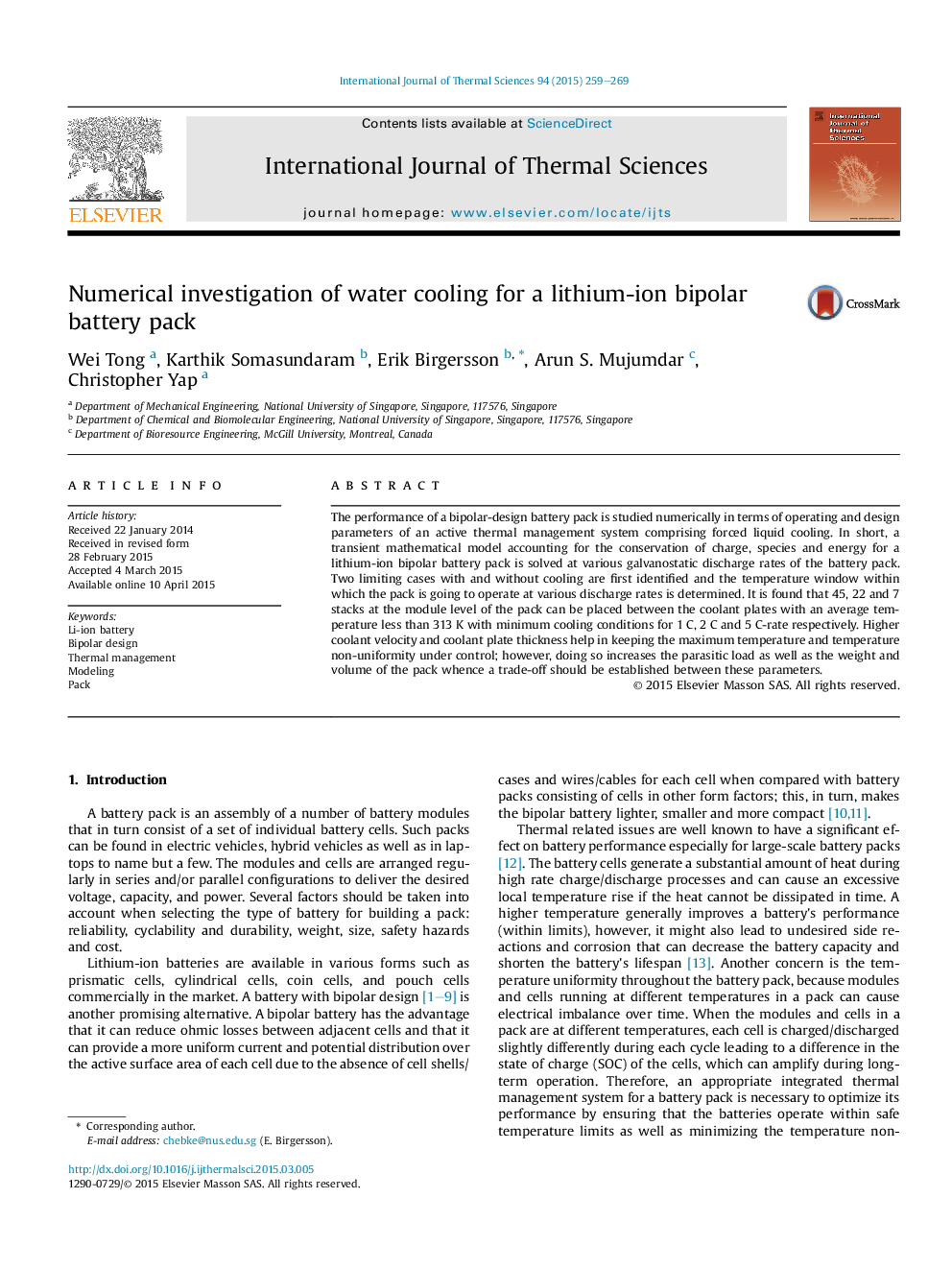| Article ID | Journal | Published Year | Pages | File Type |
|---|---|---|---|---|
| 668092 | International Journal of Thermal Sciences | 2015 | 11 Pages |
Abstract
The performance of a bipolar-design battery pack is studied numerically in terms of operating and design parameters of an active thermal management system comprising forced liquid cooling. In short, a transient mathematical model accounting for the conservation of charge, species and energy for a lithium-ion bipolar battery pack is solved at various galvanostatic discharge rates of the battery pack. Two limiting cases with and without cooling are first identified and the temperature window within which the pack is going to operate at various discharge rates is determined. It is found that 45, 22 and 7 stacks at the module level of the pack can be placed between the coolant plates with an average temperature less than 313Â K with minimum cooling conditions for 1 C, 2 C and 5 C-rate respectively. Higher coolant velocity and coolant plate thickness help in keeping the maximum temperature and temperature non-uniformity under control; however, doing so increases the parasitic load as well as the weight and volume of the pack whence a trade-off should be established between these parameters.
Related Topics
Physical Sciences and Engineering
Chemical Engineering
Fluid Flow and Transfer Processes
Authors
Wei Tong, Karthik Somasundaram, Erik Birgersson, Arun S. Mujumdar, Christopher Yap,
